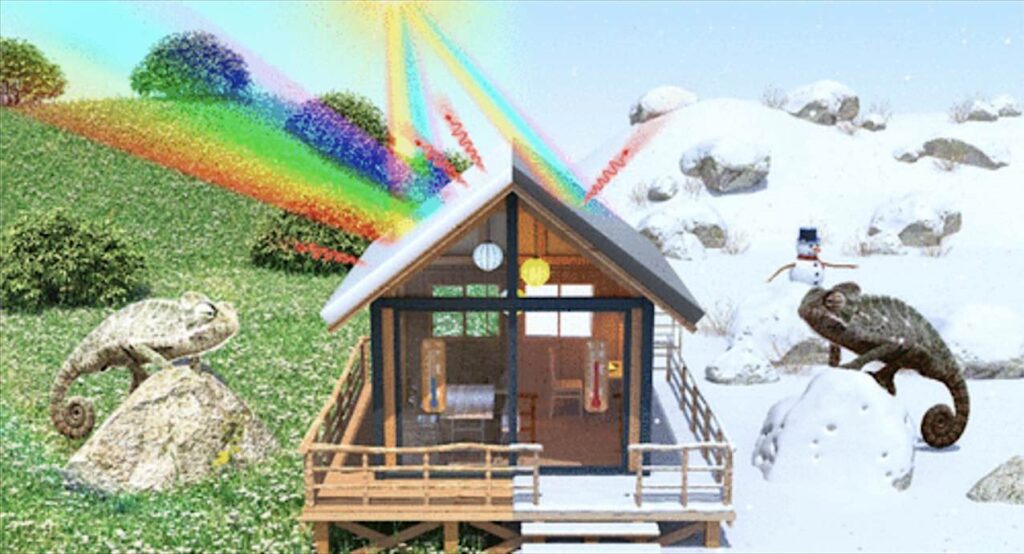The search has intensified for alternative energy-saving technologies for heating and cooling that don’t run on fossil fuels.
Now, by mimicking a desert-dwelling chameleon, Chinese scientists have developed a cheap energy-efficient, cost-effective coating on houses.
They say the new material could keep buildings cool in the summer or warm in the winter without using additional energy.
“Many desert creatures have specialized adaptations to allow them to survive in harsh environments with large daily temperature shifts,” said Dr. Fuqiang Wang, author on the paper describing the invention and researcher at the Harbin Institute of Technology. “For example, the Namaqua chameleon of southwestern Africa alters its color to regulate its body temperature as conditions change.”
This critter in particular appears light grey in hot temperatures to reflect sunlight and keep cool, then turns a dark brown once it cools down to absorb heat instead.
This unique ability is a naturally occurring example of passive temperature control—a phenomenon that could be adapted to create more energy-efficient buildings.
But many systems, such as cooling paints or colored steel tiles, are only designed to keep buildings either cool or warm, and can’t switch between modes.

Inspired by the Namaqua chameleon, Dr. Wang and his colleagues wanted to create a color-shifting coating that adapts as outside temperatures fluctuate.
To make the coating, the team mixed thermochromic microcapsules, specialized microparticles, and binders to form a suspension layer, which they sprayed or brushed onto a metal surface.
When heated to 68 degrees Fahrenheit, the surface began to change from dark to light grey. Once it reached 86F, the light-colored film reflected up to 93% of solar radiation.

“Remarkably, even when exposed to temperatures exceeding 175 degrees Fahrenheit for an entire day, the material exhibited no signs of damage,” Dr. Wang reported.
Subsequent tests involved comparing the new coating with three conventional alternatives—standard white paint, a passive radiative cooling paint, and blue steel tiles. These tests were conducted outdoors on structures resembling doghouses, providing insights across all four seasons.
During winter, the newly developed coating demonstrated slightly higher temperatures than the passive radiative cooling system, maintaining comparable warmth in milder conditions. In contrast, during summer, the innovative coating proved significantly cooler than both the white paint and the steel tiles, as detailed in the findings published in the journal Nano Letters.
Dr. Wang emphasized, “Throughout spring and fall, the new coating emerged as the sole system capable of adapting to widely fluctuating temperature changes, seamlessly transitioning from heating to cooling throughout the day.”
The researchers envision that this color-changing system could yield substantial energy savings, particularly in regions experiencing distinct seasons. Moreover, they highlight its cost-effectiveness and ease of manufacturing, making it a promising solution for enhancing energy efficiency in diverse climates.
